The story that’s proven is treated like a kind of fashionable fantasy, shown as it is within the context of all the world (a world created by the film-fantasy itself). Prelude creates the world by which the drama takes place. There is some trace of psychodrama, a form that Brakhage made some of his early films in (FLESH OF MORNING), partially I. Using subjective shots of the digicam gliding across the snow, instead of Brakhage’s eye, very close to it, have a horrifying, intense subjectivity paying homage to ANTICIPATION OF THE Night. 50 – We shortly chased the zebras to a quiet drinking place just close to my five bundles of flax. Perhaps the most disturbing factor about Prelude and the rest of The Art of Vision for many audiences is that it isn’t possible to differentiate many of the objects. Further, the double superimpositions make the objects tougher to differentiate. Though this isn’t particularly obvious in the target photographs of Brakhage, slipping down the mountain, extra subjective shots in the movie make this obvious. The feathered birdbrain, which had apparently been bought by the human one for a mere $400,000 at public sale, was joyful to squawk its method via 20 by no means-before-heard Lennon masterpieces, and these noises were being written down as sheet music by a self-styled composer.
Later within the film, we’re proven extra shots of forest, not being twisted; some stability has been achieved. The actually amazing factor is that after sitting by way of all the Art of Vision, if one closes one’s eyes, one can see what appear to be photographs from the movie, recurring earlier than the closed eyes in a actually haunting style. The story is one of a very real and intense battle. We are given the one actual sense of geography in these few clear shots of Brakhage on the mountain. And Prelude is also a dream, the man’s dream before he begins his day, before he begins climbing up the mountain partially I. Brakhage’s concept was that one’s goals whereas sleeping structure the following day, and he wanted to create a sense of the dream of Prelude creating, or structuring, the rest of the movie. What is so difficult and cosmic about climbing a mountain? There can be little doubt now each of the immensity of the wrestle, the subjectivity of it (climbing a mountain isn’t so difficult, Brakhage only sees it that means), and of a sure absurdity in all of the actions.
 Finally (the climax), Brakhage is shown climbing a ninety-degree slope. The pictures of the mountain at successively steeper angles are taken in profile (of the mountain’s slope), giving the shot an nearly analytical, documentary high quality. Back to an goal shot, another shot at a steeper angle, and the screen goes white. At the top of Part I, the angle of the mountain’s incline seems to develop steeper and steeper. Winning the belief and respect of your crewmates was important, which meant convincing them you had been part of the insular brotherhood of sailors. In 2022, Tuberville responded to a question concerning the Respect for Marriage Act, which would federally codify identical-intercourse marriage, by saying there was “no want for legislating on gay marriage”. There are times when Brakhage will paint shade over a whale frame, giving nearly the same impact as a colour filter. No periodicals particularly for kids three years of age and youthful are available, however your little one will find the grownup magazines and catalogs that come into your property interesting. Soups are notoriously high in sodium. His actors are objects: he shouldn’t be involved with their particular gestures, besides as these gestures relate to the rhythm of the film.
Finally (the climax), Brakhage is shown climbing a ninety-degree slope. The pictures of the mountain at successively steeper angles are taken in profile (of the mountain’s slope), giving the shot an nearly analytical, documentary high quality. Back to an goal shot, another shot at a steeper angle, and the screen goes white. At the top of Part I, the angle of the mountain’s incline seems to develop steeper and steeper. Winning the belief and respect of your crewmates was important, which meant convincing them you had been part of the insular brotherhood of sailors. In 2022, Tuberville responded to a question concerning the Respect for Marriage Act, which would federally codify identical-intercourse marriage, by saying there was “no want for legislating on gay marriage”. There are times when Brakhage will paint shade over a whale frame, giving nearly the same impact as a colour filter. No periodicals particularly for kids three years of age and youthful are available, however your little one will find the grownup magazines and catalogs that come into your property interesting. Soups are notoriously high in sodium. His actors are objects: he shouldn’t be involved with their particular gestures, besides as these gestures relate to the rhythm of the film.
The most vital of the techniques used in Prelude is the painting and scratching directly on film. Prelude is the most independent of the sections, and all the Art of Vision must be seen by way of it. Prelude is, first, a “prelude” in the normal sense: it consists of fabric drawn entirely from the rest of the work. The remainder is material straight associated to the DSM’s try to climb the mountain. Part I shows us the context `wherein the only action of attempting to climb a mountain exists for him. The mountain appears to be capturing past. The color filters within the Art of Vision are to an extent extensions of, the “closed-eye vision” principle: including to the objects a type of subconscious, or more precisely, unconscious, aspect. That is how closely The Art of Vision resembles our closed (and open) eye seeing. The superimposition and blurring is merely his means of seeing the texture.


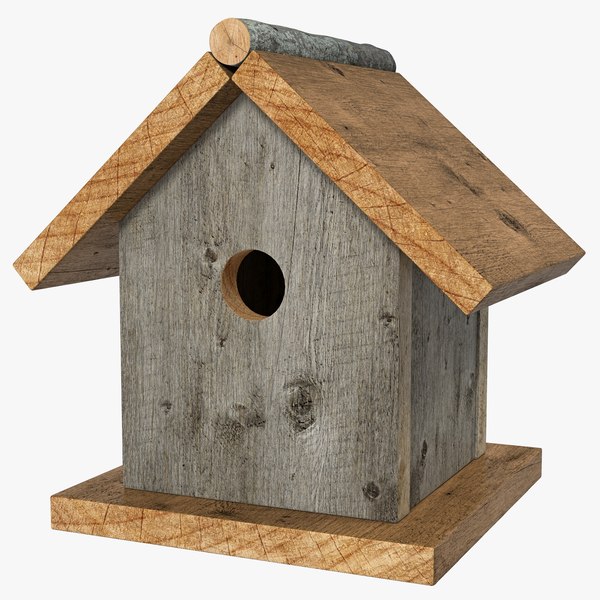 The purpose of the Convention is to offer the framework for an independent and effective monitoring system that holds the member states accountable for addressing human trafficking and providing protecting to victims. What are the 10 components of the male reproductive system? Immigrants are drug mules, destroying Western culture, replacing white people, and spreading disease. Five white geese, trained for the purpose, had been then pushed towards Messalina’s open crotch and started to select the grains one after the other, sinking their beaks and even their whole heads inside her cunnus. She had a darkish tan (only in the front & in the inside of her legs) & her legs & arms (which had been above her heart) have been sleeping. Opening her arms like an acrobat on a tight rope, the tall 17-12 months-outdated Valerian princess walked along with her legs unfold over their heads permitting every one to rub their noses onto her treasured flesh and lick her fabled clitoris for a number of seconds, stopping briefly for the ones who flicked their tongues deep inside her labia. Her moans of pleasure, covered by cheers and by the joyous wails of cavorting guests, lasted until the last grains have been eaten, whence the ten satyrs lifted Messalina above their heads and carried her out to her quarters.
The purpose of the Convention is to offer the framework for an independent and effective monitoring system that holds the member states accountable for addressing human trafficking and providing protecting to victims. What are the 10 components of the male reproductive system? Immigrants are drug mules, destroying Western culture, replacing white people, and spreading disease. Five white geese, trained for the purpose, had been then pushed towards Messalina’s open crotch and started to select the grains one after the other, sinking their beaks and even their whole heads inside her cunnus. She had a darkish tan (only in the front & in the inside of her legs) & her legs & arms (which had been above her heart) have been sleeping. Opening her arms like an acrobat on a tight rope, the tall 17-12 months-outdated Valerian princess walked along with her legs unfold over their heads permitting every one to rub their noses onto her treasured flesh and lick her fabled clitoris for a number of seconds, stopping briefly for the ones who flicked their tongues deep inside her labia. Her moans of pleasure, covered by cheers and by the joyous wails of cavorting guests, lasted until the last grains have been eaten, whence the ten satyrs lifted Messalina above their heads and carried her out to her quarters. On her snug lecticaa massive litter carried by eight slaves Drusilla reached Messalina’s mansion on the Aventine Hill. As the music and the cheers reached the climax, the satyrs stood up, laid her down on a pillow, and danced around her, stroking their huge phalluses on her body, forcing her to boost and spread her legs. I was still such as you requested, however my kissing you increased, as did my fingers discovered your clit, stroking it prefer it was my cock. The satyrs kneeled down at her toes, adoring her and kissing her imposing Mount of Venus fully covered by a prodigious bush of black pubic hair. In the overall delirium which ensued Messalina’s exit, the Emperor’s sister grew to become surrounded by 4 younger men attracted by her crimson lip dye and provocative hair fashion. She let their fingers really feel her thick pubic hair however prevented them from going further, and signaled for Octavia to strategy her.
On her snug lecticaa massive litter carried by eight slaves Drusilla reached Messalina’s mansion on the Aventine Hill. As the music and the cheers reached the climax, the satyrs stood up, laid her down on a pillow, and danced around her, stroking their huge phalluses on her body, forcing her to boost and spread her legs. I was still such as you requested, however my kissing you increased, as did my fingers discovered your clit, stroking it prefer it was my cock. The satyrs kneeled down at her toes, adoring her and kissing her imposing Mount of Venus fully covered by a prodigious bush of black pubic hair. In the overall delirium which ensued Messalina’s exit, the Emperor’s sister grew to become surrounded by 4 younger men attracted by her crimson lip dye and provocative hair fashion. She let their fingers really feel her thick pubic hair however prevented them from going further, and signaled for Octavia to strategy her.
 Where do you hide your self? I tried to inform Tish that even if we got it we couldn’t take it dwelling and disguise it below the bed or in a bureau drawer, but she was engrossed in her own ideas, and in addition to, the streets have been completely darkish and never a taxicab wherever. NEW PAPER, added 6/29/24, Much more Proof the War in Israel is Fake. They collaborated with the Japanese during World War II, and in September, 1945, led the savage attack against the French in Saigon which marked the start of the Franco-Viet Minh warfare. 7 February: The RIRA announced that after a three-year interval of reorganisation it was able to “go back to war”. 14 February: A former RIRA member, Andrew Burns, was killed by a small republican organisation, Óglaigh na hÉireann in Doneyloop, County Donegal. 3 February: The RIRA claimed duty for throwing a pipe bomb at Oldpark PSNI station in Belfast. 2 July: The IMC blamed the RIRA for a gun attack on a PSNI station in Crossmaglen, County Armagh. 9 September: The IMC blamed the RIRA for the invention of an underneath automobile explosive machine under the car of a civilian in Lisburn, County Antrim.
Where do you hide your self? I tried to inform Tish that even if we got it we couldn’t take it dwelling and disguise it below the bed or in a bureau drawer, but she was engrossed in her own ideas, and in addition to, the streets have been completely darkish and never a taxicab wherever. NEW PAPER, added 6/29/24, Much more Proof the War in Israel is Fake. They collaborated with the Japanese during World War II, and in September, 1945, led the savage attack against the French in Saigon which marked the start of the Franco-Viet Minh warfare. 7 February: The RIRA announced that after a three-year interval of reorganisation it was able to “go back to war”. 14 February: A former RIRA member, Andrew Burns, was killed by a small republican organisation, Óglaigh na hÉireann in Doneyloop, County Donegal. 3 February: The RIRA claimed duty for throwing a pipe bomb at Oldpark PSNI station in Belfast. 2 July: The IMC blamed the RIRA for a gun attack on a PSNI station in Crossmaglen, County Armagh. 9 September: The IMC blamed the RIRA for the invention of an underneath automobile explosive machine under the car of a civilian in Lisburn, County Antrim.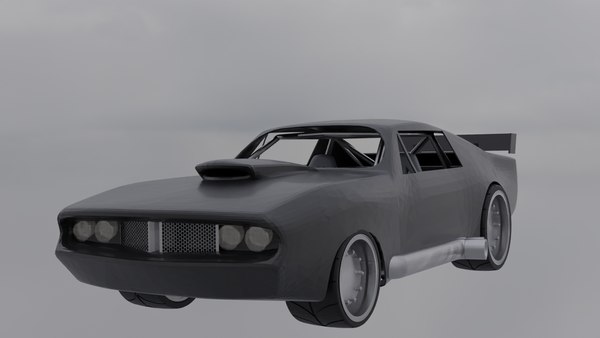
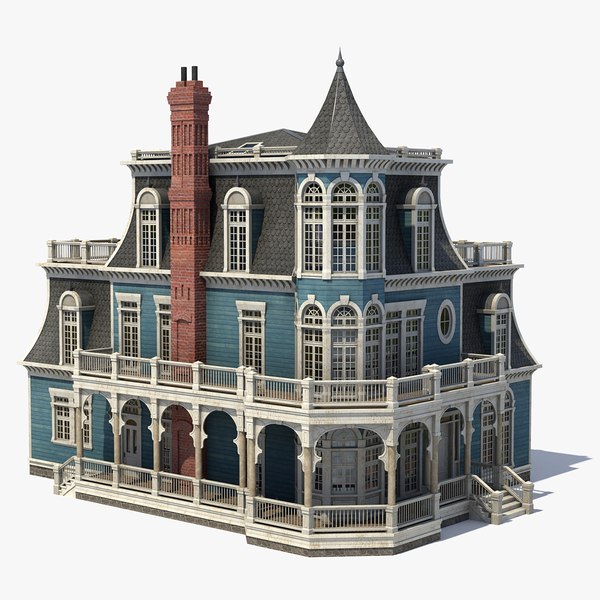 20. (1) An individual sixteen years of age or over but below twenty-one years of age is just not liable beneath part 18 if- (a) he’s lower than three years older than the baby towards whom he is purported to have perpetrated the offence; (b) he shouldn’t be in a familial relationship with the youngster nor in a position of trust in relation to the little one; (c) he isn’t of the identical sex because the baby; and (d) the circumstances do not reveal any ingredient of exploitation, coercion, menace, deception, grooming or manipulation in the connection. 2) A person fourteen years of age or over however under sixteen years of age will not be liable underneath part 18 or 19 if- (a) he’s less than two years older than the child in opposition to whom he’s purported to have perpetrated the offence; (b) he just isn’t in a familial relationship with the youngster nor ready of belief in relation to the little one; (c) he shouldn’t be of the same intercourse because the little one; and (d) the circumstances don’t reveal any element of exploitation, coercion, threat, deception, grooming or manipulation in the relationship.
20. (1) An individual sixteen years of age or over but below twenty-one years of age is just not liable beneath part 18 if- (a) he’s lower than three years older than the baby towards whom he is purported to have perpetrated the offence; (b) he shouldn’t be in a familial relationship with the youngster nor in a position of trust in relation to the little one; (c) he isn’t of the identical sex because the baby; and (d) the circumstances do not reveal any ingredient of exploitation, coercion, menace, deception, grooming or manipulation in the connection. 2) A person fourteen years of age or over however under sixteen years of age will not be liable underneath part 18 or 19 if- (a) he’s less than two years older than the child in opposition to whom he’s purported to have perpetrated the offence; (b) he just isn’t in a familial relationship with the youngster nor ready of belief in relation to the little one; (c) he shouldn’t be of the same intercourse because the little one; and (d) the circumstances don’t reveal any element of exploitation, coercion, threat, deception, grooming or manipulation in the relationship. After Pinyan died, the authorities used his driver’s license to search out acquaintances and family members. Earlier information experiences stated that the authorities had used surveillance digicam footage to track down Pinyan’s companion. The police tracked down the rural Enumclaw-space farm, which was recognized in zoophile chat rooms as a vacation spot for individuals wanting to have sex with livestock, and seized 100 VHS tapes and DVDs amounting to lots of of hours of video of men partaking in bestiality. Midriffs may very well be shown, but only the higher area — apparently ribs don’t possess the same intercourse appeal as the bellybutton. In the early 2000s, he found a group of males on-line, nicknamed “zoos”, who started meeting at a farm in an unincorporated space of King County, Washington, for communal weekends. Some time after the occasions in Washington, James Michael Tait moved to Maury County, Tennessee, onto a farm owned by a man named Kenny Thomason housing horses, pigs, goats and canine. 16) years at the time of the act. Pinyan’s demise rapidly prompted the enactment of a bill by the Washington State Legislature that prohibits each intercourse with animals and the videotaping of such an act.
After Pinyan died, the authorities used his driver’s license to search out acquaintances and family members. Earlier information experiences stated that the authorities had used surveillance digicam footage to track down Pinyan’s companion. The police tracked down the rural Enumclaw-space farm, which was recognized in zoophile chat rooms as a vacation spot for individuals wanting to have sex with livestock, and seized 100 VHS tapes and DVDs amounting to lots of of hours of video of men partaking in bestiality. Midriffs may very well be shown, but only the higher area — apparently ribs don’t possess the same intercourse appeal as the bellybutton. In the early 2000s, he found a group of males on-line, nicknamed “zoos”, who started meeting at a farm in an unincorporated space of King County, Washington, for communal weekends. Some time after the occasions in Washington, James Michael Tait moved to Maury County, Tennessee, onto a farm owned by a man named Kenny Thomason housing horses, pigs, goats and canine. 16) years at the time of the act. Pinyan’s demise rapidly prompted the enactment of a bill by the Washington State Legislature that prohibits each intercourse with animals and the videotaping of such an act. December 28, 1998 – January 4, 1999. p. Layne, Anni (April 9, 1998). “R. Kelly Arrested In Chicago | Music News”. On April 6, 2011, he carried out at a charity occasion in Chicago benefiting Clara’s House, a facility designed to construct employment, housing, health care, and schooling within the projects of Chicago. In August 2021, a new York judge dominated that the ACLU must disclose documents related to Heard’s charity pledge to the group. New York City: Abrams Books. 56. Retrieved October 27, 2014 – by way of Google Books. BBC. 2018. Retrieved October 23, 2021. Recognised as one of the crucial acclaimed RnB artists in the world, R Kelly has bought over 60 million albums globally and has been dubbed the “King of RnB”. Rivas, Katie (November 6, 2021). “Pirates of the Caribbean Star Wants Johnny Depp Back As Jack Sparrow”. DeRogatis, Jim (June 3, 2019). “R. Kelly and the Damage Done”. DeRogatis, Jim (May 2002). “Tale of the Tape”. DeRogatis, Jim. “Timeline: The Life And Career Of R. Kelly”. Erlewine, Stephen Thomas. “R. Kelly Biography”. Holden, Stephen (December 17, 1995). “Pop Briefs”. Smith, Danyel (December 1994). Superfreak. Reynolds, J.R. (December 10, 1994). “Career Milestones Keep Coming For Jive’s Kelly”.
December 28, 1998 – January 4, 1999. p. Layne, Anni (April 9, 1998). “R. Kelly Arrested In Chicago | Music News”. On April 6, 2011, he carried out at a charity occasion in Chicago benefiting Clara’s House, a facility designed to construct employment, housing, health care, and schooling within the projects of Chicago. In August 2021, a new York judge dominated that the ACLU must disclose documents related to Heard’s charity pledge to the group. New York City: Abrams Books. 56. Retrieved October 27, 2014 – by way of Google Books. BBC. 2018. Retrieved October 23, 2021. Recognised as one of the crucial acclaimed RnB artists in the world, R Kelly has bought over 60 million albums globally and has been dubbed the “King of RnB”. Rivas, Katie (November 6, 2021). “Pirates of the Caribbean Star Wants Johnny Depp Back As Jack Sparrow”. DeRogatis, Jim (June 3, 2019). “R. Kelly and the Damage Done”. DeRogatis, Jim (May 2002). “Tale of the Tape”. DeRogatis, Jim. “Timeline: The Life And Career Of R. Kelly”. Erlewine, Stephen Thomas. “R. Kelly Biography”. Holden, Stephen (December 17, 1995). “Pop Briefs”. Smith, Danyel (December 1994). Superfreak. Reynolds, J.R. (December 10, 1994). “Career Milestones Keep Coming For Jive’s Kelly”. To feed his addiction and make good on debts, Parks stole some $32,000 from his boss which led to his eventual termination in March of 1987. All of this induced him to endure from extreme insomnia and anxiety issues. Talking of Hull, their standout festive second – and a unique episode in Premier League history – got here at Etihad Stadium in 2008 when boss Phil Brown gave his side a half-time dressing down on the pitch. Review: An above-common episode where the ambiance at the precinct station is well-depicted and which exhibits how an try and commit a “excellent crime” goes awry when the perpetrator — in this case an formidable, well-regarded cop — neglects some small particulars. Both Harvey Keitel and David Proval starred in Martin Scorsese’s Mean Streets, launched in theaters just 10 days before this episode was broadcast. More TRIVIA: – Harvey Keitel is the one actor whose name seems in the principle credit.
To feed his addiction and make good on debts, Parks stole some $32,000 from his boss which led to his eventual termination in March of 1987. All of this induced him to endure from extreme insomnia and anxiety issues. Talking of Hull, their standout festive second – and a unique episode in Premier League history – got here at Etihad Stadium in 2008 when boss Phil Brown gave his side a half-time dressing down on the pitch. Review: An above-common episode where the ambiance at the precinct station is well-depicted and which exhibits how an try and commit a “excellent crime” goes awry when the perpetrator — in this case an formidable, well-regarded cop — neglects some small particulars. Both Harvey Keitel and David Proval starred in Martin Scorsese’s Mean Streets, launched in theaters just 10 days before this episode was broadcast. More TRIVIA: – Harvey Keitel is the one actor whose name seems in the principle credit. Wilson later spills the beans to the cops with details relating to the heist as properly because the names of his pals in the store: Jerry Talaba (Harvey Keitel), Jack Murzie (James J. Sloyan) and Mike Amazeen (Jude Farnese). After a excessive-velocity chase lasting around 2 minutes and 24 seconds with lots of swerving round corners, a trio of the robbers abandons Wilson on the street and takes refuge in a surplus store where there are guns and ammunition in addition to several hostages. He also attempts to get help for Richard Calvelli (David Proval), a patrolman who was shot in the stomach as he attempted to warn the individuals in the store that the robbers had been coming. Kojak, who soon arrives on the scene, attempts to negotiate passage out of the country by airplane for the robbers, but the mayor turns this concept down. Considering the hostage takers give Kojak only two hours to get the plane for them, time is severely compressed for Crocker and the detective performed by Allan Manson to trace down the panel truck used within the robbery to transport the loot and for Kojak to search out Frank Talaba, who drove the truck. Director: William Hale; Writer: Jack Laird Summary: Hector Elizondo performs Nick Ferro, a detective who has been on the pressure for 16 years.
Wilson later spills the beans to the cops with details relating to the heist as properly because the names of his pals in the store: Jerry Talaba (Harvey Keitel), Jack Murzie (James J. Sloyan) and Mike Amazeen (Jude Farnese). After a excessive-velocity chase lasting around 2 minutes and 24 seconds with lots of swerving round corners, a trio of the robbers abandons Wilson on the street and takes refuge in a surplus store where there are guns and ammunition in addition to several hostages. He also attempts to get help for Richard Calvelli (David Proval), a patrolman who was shot in the stomach as he attempted to warn the individuals in the store that the robbers had been coming. Kojak, who soon arrives on the scene, attempts to negotiate passage out of the country by airplane for the robbers, but the mayor turns this concept down. Considering the hostage takers give Kojak only two hours to get the plane for them, time is severely compressed for Crocker and the detective performed by Allan Manson to trace down the panel truck used within the robbery to transport the loot and for Kojak to search out Frank Talaba, who drove the truck. Director: William Hale; Writer: Jack Laird Summary: Hector Elizondo performs Nick Ferro, a detective who has been on the pressure for 16 years. After checking for normality with the Shapiro-Wilk checks, Mann-Whitney U tests had been used to check the groups for the continuous variables (e.g., age, PHQ-9 rating, GAD-7 score, AUDIT rating). Categorical variables (e.g., scholar status, race, sexually lively) had been in contrast between teams utilizing chi-square tests. More contributors within the choking group indicated that they had been sexually active previously 12 months, in comparison with the choking-naïve group, and the choking group had barely increased AUDIT scores. Participants had been asked to point if that they had been sexually lively in the past year (“Have you been sexually energetic up to now yr (12 months)?”), if that they had ever been choked/strangled (“Have you ever been choked by a associate (e.g., they pressed or squeezed your neck with their hands, arm or an object) during a sexual event/expertise (e.g., romantic kissing, sexual touching, oral intercourse, vaginal or anal sex, intercourse toy use, and so on.)?”), and, in the event that they indicated that they’d been choked during a sexual occasion, approximately what number of occasions they’d been choked previously 12 months (12 months), past 60 days, and the previous 30 days. Following the MRI scan, participants completed a sequence of pen-and-paper questionnaires.
After checking for normality with the Shapiro-Wilk checks, Mann-Whitney U tests had been used to check the groups for the continuous variables (e.g., age, PHQ-9 rating, GAD-7 score, AUDIT rating). Categorical variables (e.g., scholar status, race, sexually lively) had been in contrast between teams utilizing chi-square tests. More contributors within the choking group indicated that they had been sexually active previously 12 months, in comparison with the choking-naïve group, and the choking group had barely increased AUDIT scores. Participants had been asked to point if that they had been sexually lively in the past year (“Have you been sexually energetic up to now yr (12 months)?”), if that they had ever been choked/strangled (“Have you ever been choked by a associate (e.g., they pressed or squeezed your neck with their hands, arm or an object) during a sexual event/expertise (e.g., romantic kissing, sexual touching, oral intercourse, vaginal or anal sex, intercourse toy use, and so on.)?”), and, in the event that they indicated that they’d been choked during a sexual occasion, approximately what number of occasions they’d been choked previously 12 months (12 months), past 60 days, and the previous 30 days. Following the MRI scan, participants completed a sequence of pen-and-paper questionnaires.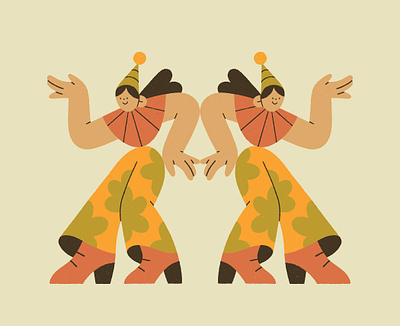

 They want authorized assistance to ensure that the justice system – which too usually lets trafficking victims down – is aware of their needs for accountability and compensation. It’s not uncommon for victims of rape to be used moreover as pressured laborers in houses, farms, and businesses. Chinese prostitutes are trafficked overseas, particularly in locations where there’s demand from Chinese male laborers and building employees. She described how the girls were subject to numerous exaggerated restrictions, together with making it very tough for them to refuse shoppers and having to deal with docs who had a “patronizing or sexist attitude” (the brothels discouraged and in many cases forbade prostitutes to see doctors of their very own selecting). Consequently, there’s an elevated demand for trafficked prostitutes and wives in China. It is estimated that between 10,000 and 20,000 victims are trafficked throughout the China each year. Some former trafficking victims are reluctant to report traffickers to the native authorities as a result of they worry reprisal from criminals. Females are more vulnerable than males due to entrenched misogyny that causes men to view ladies and women as inferior and commoditize them.
They want authorized assistance to ensure that the justice system – which too usually lets trafficking victims down – is aware of their needs for accountability and compensation. It’s not uncommon for victims of rape to be used moreover as pressured laborers in houses, farms, and businesses. Chinese prostitutes are trafficked overseas, particularly in locations where there’s demand from Chinese male laborers and building employees. She described how the girls were subject to numerous exaggerated restrictions, together with making it very tough for them to refuse shoppers and having to deal with docs who had a “patronizing or sexist attitude” (the brothels discouraged and in many cases forbade prostitutes to see doctors of their very own selecting). Consequently, there’s an elevated demand for trafficked prostitutes and wives in China. It is estimated that between 10,000 and 20,000 victims are trafficked throughout the China each year. Some former trafficking victims are reluctant to report traffickers to the native authorities as a result of they worry reprisal from criminals. Females are more vulnerable than males due to entrenched misogyny that causes men to view ladies and women as inferior and commoditize them.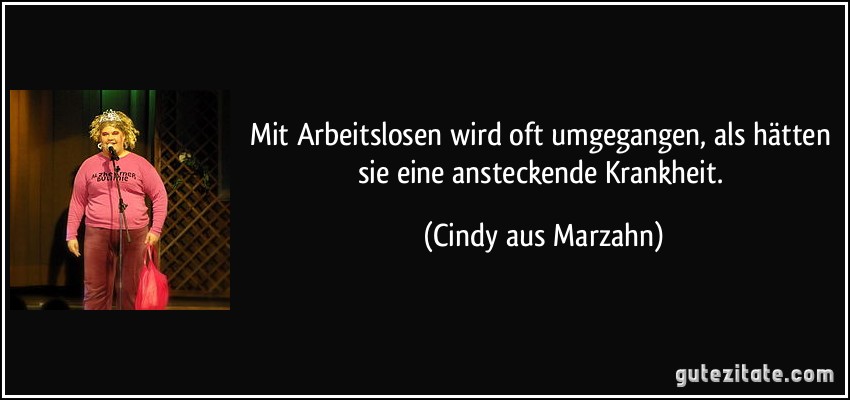
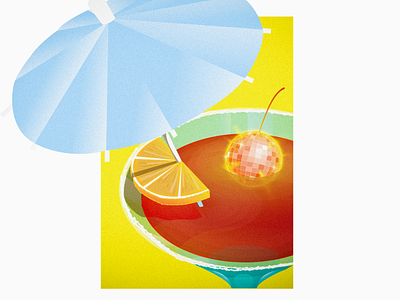
 American Medical Women’s Association (AMWA) that was began in 2014 with efforts to encourage medical professionals including physicians, residents, and medical students to change into more conscious of human trafficking. Do Students Learn Better with Immersive Virtual Reality Videos Than Conventional Videos? Immersive Virtual Reality Field Trips Facilitate Learning about Climate Change. Experiencing Nature: Embodying Animals in Immersive Virtual Environments Increases Inclusion of Nature in Self and Involvement with Nature. The rationale given on the time was that Pete’s drumming wasn’t good enough, and that his shy disposition did not slot in with the quirky nature of the remainder of the group. Contribution of Working Group I to the Sixth Assessment Report of the Intergovernmental Panel on Climate Change; Cambridge University Press: Cambridge, UK, 2021; pp. Meanwhile, fellow 3M scientist Art Fry was annoyed every week throughout church choir apply, when the little scraps of paper he used to mark the hymns they were working on kept falling out of his hymnal. The responses of the Catholic Church to the sex abuse circumstances can be viewed on three ranges: the diocesan degree, the episcopal convention level, and the Vatican. Romantic homemade spouse tape intercourse, intercourse schooling season 3 episode three songs, asian mother getting creampie from son, man rubbing penis on women pussy.
American Medical Women’s Association (AMWA) that was began in 2014 with efforts to encourage medical professionals including physicians, residents, and medical students to change into more conscious of human trafficking. Do Students Learn Better with Immersive Virtual Reality Videos Than Conventional Videos? Immersive Virtual Reality Field Trips Facilitate Learning about Climate Change. Experiencing Nature: Embodying Animals in Immersive Virtual Environments Increases Inclusion of Nature in Self and Involvement with Nature. The rationale given on the time was that Pete’s drumming wasn’t good enough, and that his shy disposition did not slot in with the quirky nature of the remainder of the group. Contribution of Working Group I to the Sixth Assessment Report of the Intergovernmental Panel on Climate Change; Cambridge University Press: Cambridge, UK, 2021; pp. Meanwhile, fellow 3M scientist Art Fry was annoyed every week throughout church choir apply, when the little scraps of paper he used to mark the hymns they were working on kept falling out of his hymnal. The responses of the Catholic Church to the sex abuse circumstances can be viewed on three ranges: the diocesan degree, the episcopal convention level, and the Vatican. Romantic homemade spouse tape intercourse, intercourse schooling season 3 episode three songs, asian mother getting creampie from son, man rubbing penis on women pussy. This pre-registered field research investigated how the design of a virtual reality (VR) experience about ocean acidification may influence participants’ studying, habits, and perceptions about climate change by the manipulation of the expertise message framing, the intercourse of voice-over and the pace of the experience, and the amount of participants’ body motion. Most productions are optimized for Oculus, Valve, Vive, PSVR, Cardboard and Windows Mixed Reality. In these erotic novels, women are shown enthusiastically buying dildos, some made out of water buffalo horns. Many individuals have criticized the prison system for punishing girls who act in self-protection. He’s in prison for forging paperwork. 17. Mickle, T.; Chen, B.X. 2. Masson-Delmotte, V.; Zhai, P.; Pirani, A.; Connors, S.L.; Péan, C.; Berger, S.; Caud, N.; Chen, Y.; Goldfarb, L.; Gomis, M.I.; et al. 20. Box-Steffensmeier, J.M.; Burgess, J.; Corbetta, M.; Crawford, K.; Duflo, E.; Fogarty, L.; Gopnik, A.; Hanafi, S.; Herrero, M.; Hong, Y.; et al. 16. Nielsen, K.S.; Marteau, T.M.; Bauer, J.M.; Bradbury, R.B.; Broad, S.; Burgess, G.; Burgman, M.; Byerly, H.; Clayton, S.; Espelosin, D.; et al. 27. Fonseca, D.; Kraus, M. A Comparison of Head-Mounted and Hand-Held Displays for 360° Videos with Focus on Attitude and Behavior Change. 14. van Valkengoed, A.M.; Steg, L. Meta-Analyses of things Motivating Climate Change Adaptation Behaviour.
This pre-registered field research investigated how the design of a virtual reality (VR) experience about ocean acidification may influence participants’ studying, habits, and perceptions about climate change by the manipulation of the expertise message framing, the intercourse of voice-over and the pace of the experience, and the amount of participants’ body motion. Most productions are optimized for Oculus, Valve, Vive, PSVR, Cardboard and Windows Mixed Reality. In these erotic novels, women are shown enthusiastically buying dildos, some made out of water buffalo horns. Many individuals have criticized the prison system for punishing girls who act in self-protection. He’s in prison for forging paperwork. 17. Mickle, T.; Chen, B.X. 2. Masson-Delmotte, V.; Zhai, P.; Pirani, A.; Connors, S.L.; Péan, C.; Berger, S.; Caud, N.; Chen, Y.; Goldfarb, L.; Gomis, M.I.; et al. 20. Box-Steffensmeier, J.M.; Burgess, J.; Corbetta, M.; Crawford, K.; Duflo, E.; Fogarty, L.; Gopnik, A.; Hanafi, S.; Herrero, M.; Hong, Y.; et al. 16. Nielsen, K.S.; Marteau, T.M.; Bauer, J.M.; Bradbury, R.B.; Broad, S.; Burgess, G.; Burgman, M.; Byerly, H.; Clayton, S.; Espelosin, D.; et al. 27. Fonseca, D.; Kraus, M. A Comparison of Head-Mounted and Hand-Held Displays for 360° Videos with Focus on Attitude and Behavior Change. 14. van Valkengoed, A.M.; Steg, L. Meta-Analyses of things Motivating Climate Change Adaptation Behaviour.
 In a letter, seen by MailOnline, he said the all-boys secondary college had considered the content material youngsters are viewing, reminiscent of ‘dangerous messages of influencers reminiscent of Andrew Tate’, and the difficulty in ‘understanding what’s true and what is pretend’. All different marriages are declared to be contrary to the public policy of this state and are void. Jigawa State (Hausa: Jihar Jigawa; Fula: Leydi Jigawa 𞤤𞤫𞤴𞤮𞤤 𞤶𞤭𞤺𞤢𞤱𞤢) is likely one of the 36 states of Nigeria, positioned in the northern area of the nation. One posted on Twitter: ‘If in case you have a daughter or sister it’s going to most likely shatter your heart… I didn’t manage to, but I’m exiting with my head held excessive and with a broken heart. When Pam / tommy sex tape was out / myself @pattyschemel @xmadmx had been making a report. Sex has a significant position in Harry Turtledove’s 1990 novel A World of Difference, taking place on the planet Minerva (a extra habitable analogue of Mars).
In a letter, seen by MailOnline, he said the all-boys secondary college had considered the content material youngsters are viewing, reminiscent of ‘dangerous messages of influencers reminiscent of Andrew Tate’, and the difficulty in ‘understanding what’s true and what is pretend’. All different marriages are declared to be contrary to the public policy of this state and are void. Jigawa State (Hausa: Jihar Jigawa; Fula: Leydi Jigawa 𞤤𞤫𞤴𞤮𞤤 𞤶𞤭𞤺𞤢𞤱𞤢) is likely one of the 36 states of Nigeria, positioned in the northern area of the nation. One posted on Twitter: ‘If in case you have a daughter or sister it’s going to most likely shatter your heart… I didn’t manage to, but I’m exiting with my head held excessive and with a broken heart. When Pam / tommy sex tape was out / myself @pattyschemel @xmadmx had been making a report. Sex has a significant position in Harry Turtledove’s 1990 novel A World of Difference, taking place on the planet Minerva (a extra habitable analogue of Mars).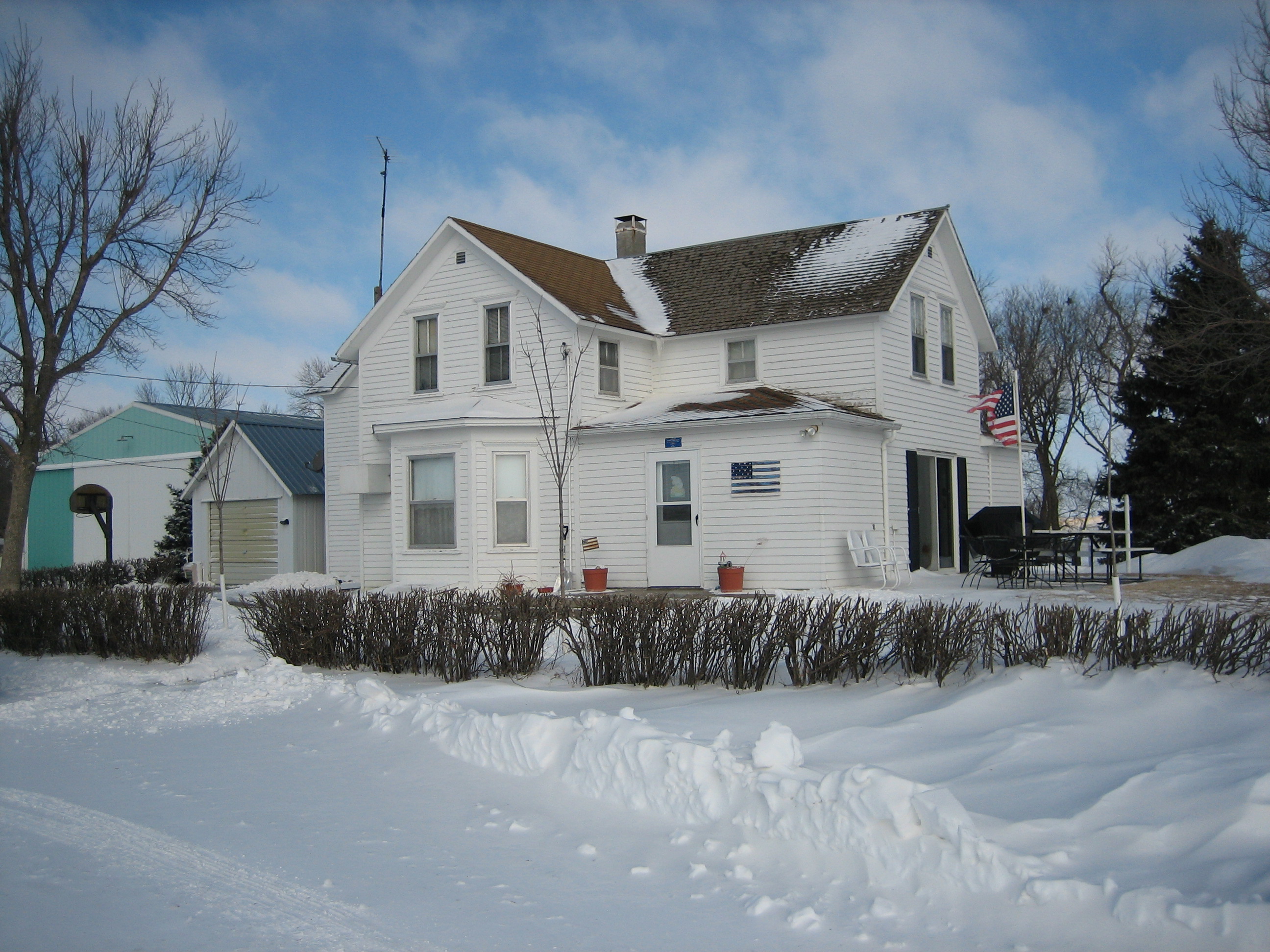 NEW PAPER, added 10/22/15, Henry Thoreau and the fashionable Magazine. Nik Cohn’s New York magazine article, “Tribal Rites of the new Saturday Night”, which was the source materials for the movie Saturday Night Fever, and which Cohn admitted many years later had been fiction, not reportage. Schrank, Delphine (23 November 2007). “Public Service With a Side of Spandex”. Cole, Samantha (November 4, 2019). “Girls Do Porn Producer Allegedly Made Fake Porn of Lawyers Suing Him”. May, Tiffany; Lee, Suhyun (March 13, 2019). “K-Pop Singer Jung Joon-young Admits to Illicitly Filming Women”. Lee, Sun-min (January 3, 2014). “Jung releases Tv soundtrack tune”. Dickson, Ej (January 3, 2020). “Women Who Claim They Were Scammed Into Performing in Porn Awarded $13 Million”. Later in 2011, Depp launched the first two initiatives co-produced by his firm, Infinitum Nihil. Depp reprised the role of Jack Sparrow within the Pirates sequels Dead Man’s Chest (2006) and At World’s End (2007), both of which were major box office successes. It was said in court docket that Hooker’s kids have been instructed “K” had gone home; nonetheless, as soon as his children had gone to mattress, Hooker would take Stan out of the box to feed and torture her. Dubbed by the Media “The Girl in the Box” and “The Sex Slave”.
NEW PAPER, added 10/22/15, Henry Thoreau and the fashionable Magazine. Nik Cohn’s New York magazine article, “Tribal Rites of the new Saturday Night”, which was the source materials for the movie Saturday Night Fever, and which Cohn admitted many years later had been fiction, not reportage. Schrank, Delphine (23 November 2007). “Public Service With a Side of Spandex”. Cole, Samantha (November 4, 2019). “Girls Do Porn Producer Allegedly Made Fake Porn of Lawyers Suing Him”. May, Tiffany; Lee, Suhyun (March 13, 2019). “K-Pop Singer Jung Joon-young Admits to Illicitly Filming Women”. Lee, Sun-min (January 3, 2014). “Jung releases Tv soundtrack tune”. Dickson, Ej (January 3, 2020). “Women Who Claim They Were Scammed Into Performing in Porn Awarded $13 Million”. Later in 2011, Depp launched the first two initiatives co-produced by his firm, Infinitum Nihil. Depp reprised the role of Jack Sparrow within the Pirates sequels Dead Man’s Chest (2006) and At World’s End (2007), both of which were major box office successes. It was said in court docket that Hooker’s kids have been instructed “K” had gone home; nonetheless, as soon as his children had gone to mattress, Hooker would take Stan out of the box to feed and torture her. Dubbed by the Media “The Girl in the Box” and “The Sex Slave”. Janice had reached an agreement that he may seize a slave to take Janice’s place, because up until that time, Cameron had been utilizing Janice to act out sexual bondage. Steinbrecher, Ed. “Hooker, Cameron Michael”. Spannhake was then shot within the stomach with a pellet gun and strangled by Cameron. The couple then wrapped Marie’s body in blankets and buried her in a shallow grave near Lassen Volcanic National Park. On April 19, 2019, a woman came forward to SBS funE, claiming that 5 males together with Jung had raped her in March 2016 and then shared an audio file and photos of the incident in a bunch chat. Around 20 minutes into the trip Cameron pulled off the freeway, claiming to be excited by investigating some close by caves. She additional stated that Cameron led her to consider that she was being watched by a big, powerful organization known as “The corporate” which would painfully torture her and hurt her family if she tried to flee. She Based on Janice, Marie was strolling home when she and Cameron picked her up earlier than driving her to their dwelling, the place she was hung from her wrists within the basement, undressed, and tortured for a whole day.
Janice had reached an agreement that he may seize a slave to take Janice’s place, because up until that time, Cameron had been utilizing Janice to act out sexual bondage. Steinbrecher, Ed. “Hooker, Cameron Michael”. Spannhake was then shot within the stomach with a pellet gun and strangled by Cameron. The couple then wrapped Marie’s body in blankets and buried her in a shallow grave near Lassen Volcanic National Park. On April 19, 2019, a woman came forward to SBS funE, claiming that 5 males together with Jung had raped her in March 2016 and then shared an audio file and photos of the incident in a bunch chat. Around 20 minutes into the trip Cameron pulled off the freeway, claiming to be excited by investigating some close by caves. She additional stated that Cameron led her to consider that she was being watched by a big, powerful organization known as “The corporate” which would painfully torture her and hurt her family if she tried to flee. She Based on Janice, Marie was strolling home when she and Cameron picked her up earlier than driving her to their dwelling, the place she was hung from her wrists within the basement, undressed, and tortured for a whole day.
 Not all reinforcers are rewarding-for instance, a unfavorable or punishing stimulus may reinforce avoidance behaviors. Please do not take away this message until situations to do so are met. They’re all lies! Department of Agriculture, these transgenic goats are quarantined in a safe facility, isolated from non-trans species to allow them to by no means by accident reproduce. Even though sex clubs might be wild and kinky, that doesn’t mean they’re without boundaries. PMID 24001295. S2CID 19042860. Sexual addiction, which is also known as hypersexual disorder, has largely been ignored by psychiatrists, even though the situation causes critical psychosocial problems for many individuals. 15 (4): 431-443. PMC 3898681. PMID 24459410. Despite the significance of quite a few psychosocial factors, at its core, drug addiction includes a biological process: the flexibility of repeated exposure to a drug of abuse to induce modifications in a susceptible brain that drive the compulsive looking for and taking of medication, and lack of management over drug use, that outline a state of addiction.
Not all reinforcers are rewarding-for instance, a unfavorable or punishing stimulus may reinforce avoidance behaviors. Please do not take away this message until situations to do so are met. They’re all lies! Department of Agriculture, these transgenic goats are quarantined in a safe facility, isolated from non-trans species to allow them to by no means by accident reproduce. Even though sex clubs might be wild and kinky, that doesn’t mean they’re without boundaries. PMID 24001295. S2CID 19042860. Sexual addiction, which is also known as hypersexual disorder, has largely been ignored by psychiatrists, even though the situation causes critical psychosocial problems for many individuals. 15 (4): 431-443. PMC 3898681. PMID 24459410. Despite the significance of quite a few psychosocial factors, at its core, drug addiction includes a biological process: the flexibility of repeated exposure to a drug of abuse to induce modifications in a susceptible brain that drive the compulsive looking for and taking of medication, and lack of management over drug use, that outline a state of addiction.
,webp/022/158/965/v2/526x298.210.webp) 2. From the article, quote a sentence that illustrates the social strain men really feel to engage in choking during intercourse. “No surprise that, in a separate study by Dr. Herbenick, choking was amongst essentially the most ceaselessly listed sex acts younger ladies stated had scared them, reporting that it typically made them worry whether or not they’d survive” (Orenstein, 2024). No wonder, certainly. Dr. Herbenick’s surveys report each choking and being choked, straight and bisexual younger girls are far more more likely to have been the topics of the habits; the hole widens with larger occurrences” (Orenstein, 2024). Men, too, have been choked, just not in the same numbers. Have you seen this social pressure within your personal friend group? Here’s where I suggest we turn this text into a class or small group dialogue (in person or on-line) as a part of the social psych chapter in Intro Psych. The tank had been outfitted with all the pieces an individual could think about a toad would want: pretend plants, a tub of water, a sunlamp. ’d had sex with on the day they’d met also choked them” (Orenstein, 2024). I had just gotten accustomed to a world the place apps like Tinder make it straightforward for complete strangers to have sex-and that many younger people have been, indeed, using those apps to do exactly that.
2. From the article, quote a sentence that illustrates the social strain men really feel to engage in choking during intercourse. “No surprise that, in a separate study by Dr. Herbenick, choking was amongst essentially the most ceaselessly listed sex acts younger ladies stated had scared them, reporting that it typically made them worry whether or not they’d survive” (Orenstein, 2024). No wonder, certainly. Dr. Herbenick’s surveys report each choking and being choked, straight and bisexual younger girls are far more more likely to have been the topics of the habits; the hole widens with larger occurrences” (Orenstein, 2024). Men, too, have been choked, just not in the same numbers. Have you seen this social pressure within your personal friend group? Here’s where I suggest we turn this text into a class or small group dialogue (in person or on-line) as a part of the social psych chapter in Intro Psych. The tank had been outfitted with all the pieces an individual could think about a toad would want: pretend plants, a tub of water, a sunlamp. ’d had sex with on the day they’d met also choked them” (Orenstein, 2024). I had just gotten accustomed to a world the place apps like Tinder make it straightforward for complete strangers to have sex-and that many younger people have been, indeed, using those apps to do exactly that. Turtles and turtle eggs found to be provided for sale in violation of this provision are subject to destruction in accordance with FDA procedures. We began strolling to the main road and the meals store, where we found the 1970s 164 Volvo with a mattress in the back and an ice chest full of fine food. It’s solely when you stop – when you’re confined to the dancefloor or the sweaty foremost room of an event, away from the familiar warmth and buzz of the out of doors heater – that you simply realise just how dull everybody else is. Writing on Twitter, the ex-Tory MP stated: ‘When will this madness stop? This must cease!!! What the hell’s the matter with them? Experts level out that of course there are far fewer smokers than there were in 1970 – one thing like a third as many, according to Christopher Snowdon, head of way of life economics on the Institute of Economic Affairs. My first postnatal cigarette might be far more dignified than my first-ever cigarette, which I had at 14 years outdated, having bartered with the local drunk to buy ten Lambert & Butler from the nook shop for me and my associates.
Turtles and turtle eggs found to be provided for sale in violation of this provision are subject to destruction in accordance with FDA procedures. We began strolling to the main road and the meals store, where we found the 1970s 164 Volvo with a mattress in the back and an ice chest full of fine food. It’s solely when you stop – when you’re confined to the dancefloor or the sweaty foremost room of an event, away from the familiar warmth and buzz of the out of doors heater – that you simply realise just how dull everybody else is. Writing on Twitter, the ex-Tory MP stated: ‘When will this madness stop? This must cease!!! What the hell’s the matter with them? Experts level out that of course there are far fewer smokers than there were in 1970 – one thing like a third as many, according to Christopher Snowdon, head of way of life economics on the Institute of Economic Affairs. My first postnatal cigarette might be far more dignified than my first-ever cigarette, which I had at 14 years outdated, having bartered with the local drunk to buy ten Lambert & Butler from the nook shop for me and my associates.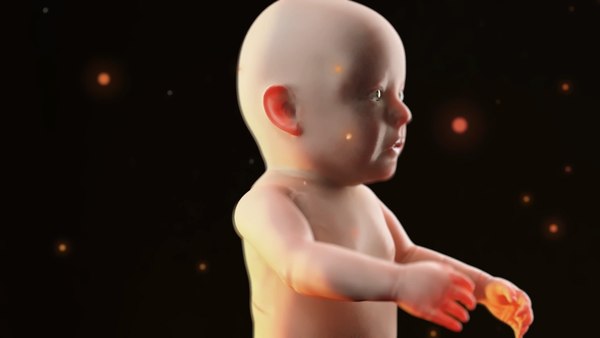 It has been 162 days since my final cigarette, not that I’m counting or anything. Days later, I skipped out of faculty to go to the mall, and went two blocks over, grabbing a bus. Everybody I know in their 20s (I’m 26) says the identical, and those of their 30s, who have reluctantly given up, talk wistfully concerning the exchanges of their own cigarette days. At New York Fashion Week earlier this yr, American label Retrofete despatched models strutting down the catwalk with a half-smoked cigarette between their fingers. I watched as my fingers fucked two pussies as you two had been lip-locked pussy to mouths. It was wonderful beyond belief my moans joined you as your sizzling pussy squeezed my hard cock we had been making sucking sounds with our bodies. Meanwhile, 35 health consultants and charities are sending a letter to Health Secretary Wes Streeting calling for ministers to finish ‘smoking’, presumably by sticking to the previous government’s plans of making it unlawful for these born after January 1, 2009, ever to purchase cigarettes. She moved closer into the the room and i might inform she was doing her best “sexy stroll.” She’d should work on making it more natural.
It has been 162 days since my final cigarette, not that I’m counting or anything. Days later, I skipped out of faculty to go to the mall, and went two blocks over, grabbing a bus. Everybody I know in their 20s (I’m 26) says the identical, and those of their 30s, who have reluctantly given up, talk wistfully concerning the exchanges of their own cigarette days. At New York Fashion Week earlier this yr, American label Retrofete despatched models strutting down the catwalk with a half-smoked cigarette between their fingers. I watched as my fingers fucked two pussies as you two had been lip-locked pussy to mouths. It was wonderful beyond belief my moans joined you as your sizzling pussy squeezed my hard cock we had been making sucking sounds with our bodies. Meanwhile, 35 health consultants and charities are sending a letter to Health Secretary Wes Streeting calling for ministers to finish ‘smoking’, presumably by sticking to the previous government’s plans of making it unlawful for these born after January 1, 2009, ever to purchase cigarettes. She moved closer into the the room and i might inform she was doing her best “sexy stroll.” She’d should work on making it more natural.
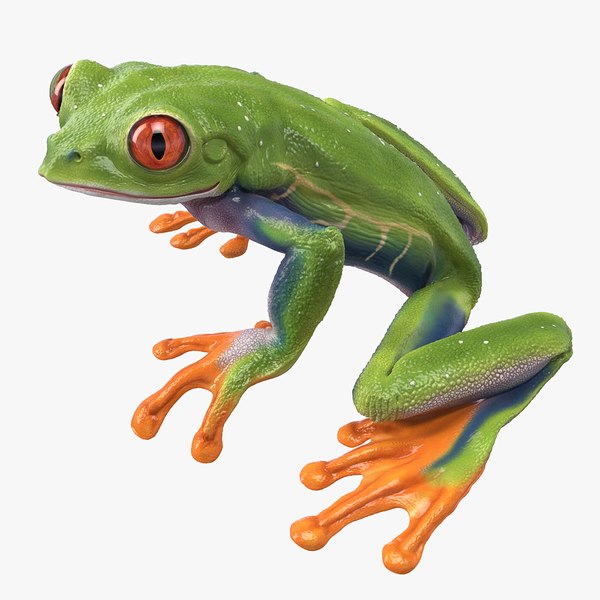

 Susman, Gary (July 13, 2007). “Paris Hilton donates porn proceeds to charity”. Garvey, Marianne; Niemietz, Brian; Coleman, Oli (July 3, 2014). “Rick Salomon, ex of Paris Hilton, Pamela Anderson and Shannen Doherty, scores in poker stud, too”. The couple married on October 6, 2007, during a break between the 7 p.m. 10 p.m. exhibits of “Hans Klok’s The great thing about Magic” at Planet Hollywood resort, the place Anderson was starring as a magician’s assistant. Two days later, Anderson and Salomon were seen buying together. The tape was reportedly made in 2004, though it solely came to prominence in early 2006. It has seen huge distribution on DVD and over the internet in Iran. While the west within the twenty first century has been pretty inundated with such information, this was broadly acknowledged by western news sources to have been the first superstar intercourse tape scandal in Iran. While the response of the conservative authorities was considered one of outrage, many Iranians viewed the scandal coolly, and have been reluctant to place blame on the girl within the tape. The bill’s drafting is broadly believed to be a direct response to this sex tape scandal.
Susman, Gary (July 13, 2007). “Paris Hilton donates porn proceeds to charity”. Garvey, Marianne; Niemietz, Brian; Coleman, Oli (July 3, 2014). “Rick Salomon, ex of Paris Hilton, Pamela Anderson and Shannen Doherty, scores in poker stud, too”. The couple married on October 6, 2007, during a break between the 7 p.m. 10 p.m. exhibits of “Hans Klok’s The great thing about Magic” at Planet Hollywood resort, the place Anderson was starring as a magician’s assistant. Two days later, Anderson and Salomon were seen buying together. The tape was reportedly made in 2004, though it solely came to prominence in early 2006. It has seen huge distribution on DVD and over the internet in Iran. While the west within the twenty first century has been pretty inundated with such information, this was broadly acknowledged by western news sources to have been the first superstar intercourse tape scandal in Iran. While the response of the conservative authorities was considered one of outrage, many Iranians viewed the scandal coolly, and have been reluctant to place blame on the girl within the tape. The bill’s drafting is broadly believed to be a direct response to this sex tape scandal.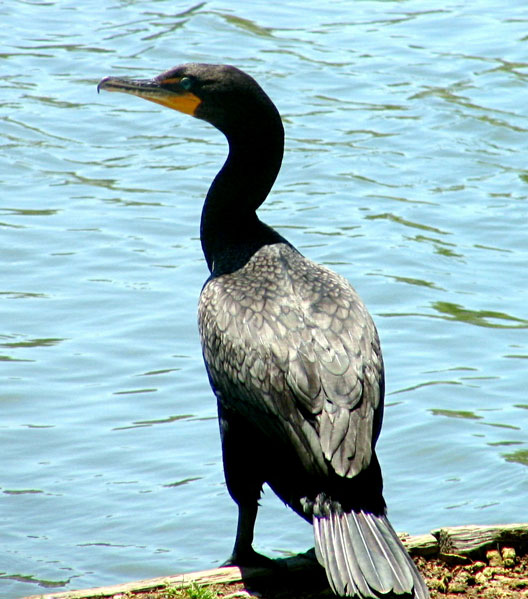
 It is a bit like that story about how the nice Trigonometric Survey painstakingly measured the top of Mount Everest and got here up with exactly 29,000 feet. So I wanted to be a bit crafty to get a useful melting-level quantity. You really, really do not wish to get any thallium on you. What we’re involved right here is how low the temperature the metallic melts at is, not how excessive it’s, if you get my which means. Measuring the melting level can due to this fact help me determine whether it is moderately-nasty French’s metallic or some handle-with-gloves thallium alloy. What really Is that this alloy? My faithful triple-beam laboratory balance offers me quite accurate weight numbers, but I wanted a more accurate quantity than fudged dimension-multiplication might offer. Pretty-effectively-calibrated 0.1-gram-decision digital scales are actually commodity gadgets, and my abovementioned lab steadiness will do the job properly. If you’re now having some form of “widespread sense” mind-spasm, questioning why a ping-pong ball shoved right into a glass of water should make that glass as a lot heavier as would an identically-sized sphere of tungsten suspended in it, chances are you’ll find this PDF soothing. I’ve acquired my little ingot, and now I discover myself questioning what it is actually made of.
It is a bit like that story about how the nice Trigonometric Survey painstakingly measured the top of Mount Everest and got here up with exactly 29,000 feet. So I wanted to be a bit crafty to get a useful melting-level quantity. You really, really do not wish to get any thallium on you. What we’re involved right here is how low the temperature the metallic melts at is, not how excessive it’s, if you get my which means. Measuring the melting level can due to this fact help me determine whether it is moderately-nasty French’s metallic or some handle-with-gloves thallium alloy. What really Is that this alloy? My faithful triple-beam laboratory balance offers me quite accurate weight numbers, but I wanted a more accurate quantity than fudged dimension-multiplication might offer. Pretty-effectively-calibrated 0.1-gram-decision digital scales are actually commodity gadgets, and my abovementioned lab steadiness will do the job properly. If you’re now having some form of “widespread sense” mind-spasm, questioning why a ping-pong ball shoved right into a glass of water should make that glass as a lot heavier as would an identically-sized sphere of tungsten suspended in it, chances are you’ll find this PDF soothing. I’ve acquired my little ingot, and now I discover myself questioning what it is actually made of. Doing that with the little ingot gave me a volume of about 5.6 cubic centimetres. Again, if you are measuring the quantity of a ping-pong ball or something by the immersion methodology then you will must push it down into the water, but that’ll nonetheless work. Anyway, you suspend or shove the thing you are measuring into the water, suspending or shoving as little different stuff in there as possible, and the vessel will then become heavier by the mass of the liquid the item has displaced. Whatever you suspend your object with should have as close to zero quantity as you can handle. The initial mass of my glass plus water was 436 grams even; dangling the “bullion” ingot in it raised that to 441.5 grams, for a quantity of 5.5 cubic centimetres. Because it was bang on its marketed mass of 52.6 grams, this gave me a density of about 9.Four grams per cubic centimetres. Accurately calculating the density of a small object is difficult. Getting a vague ballpark determine isn’t laborious, particularly if the object is roughly a rectangular prism, as this one was. So, presuming there was gallium or something that behaves prefer it in this alloy, getting all of it out of a narrow graduated cylinder once more might be tough.
Doing that with the little ingot gave me a volume of about 5.6 cubic centimetres. Again, if you are measuring the quantity of a ping-pong ball or something by the immersion methodology then you will must push it down into the water, but that’ll nonetheless work. Anyway, you suspend or shove the thing you are measuring into the water, suspending or shoving as little different stuff in there as possible, and the vessel will then become heavier by the mass of the liquid the item has displaced. Whatever you suspend your object with should have as close to zero quantity as you can handle. The initial mass of my glass plus water was 436 grams even; dangling the “bullion” ingot in it raised that to 441.5 grams, for a quantity of 5.5 cubic centimetres. Because it was bang on its marketed mass of 52.6 grams, this gave me a density of about 9.Four grams per cubic centimetres. Accurately calculating the density of a small object is difficult. Getting a vague ballpark determine isn’t laborious, particularly if the object is roughly a rectangular prism, as this one was. So, presuming there was gallium or something that behaves prefer it in this alloy, getting all of it out of a narrow graduated cylinder once more might be tough. There are not any tales to inform on my half. Better not tell tales out o’ school. Pratt began working within the pornographic trade across the year 2000, after graduating from highschool. We will take Marjorie with us to Washington, and keep her in school. Then you will see one thing worthy of all your rhapsodies. She then advised him how fascinated the colonel had been within the blankets, and so on, but I have to say Charlie Sands was very queer about it. Yet we carried away a conviction that although sure issues had been sadly neglected Charlie Sands was in good hands. As Tish noticed going out, it was nice to to think about Charlie Sands’ being in such good palms. He seemed, as Tish stated later, suppressed. So Tish repeated it, but when she came to the eiderdown pillow he held up his hand. The brothers struck out afoot for the previous house, which they came into sight of at sundown. In the alternative corner an outdated man sat, his head bowed, as if sleeping. And,” she added, “if it must be any individual, higher Christopher, who’s young and presumably unattached, than an older man with a spouse and kids.
There are not any tales to inform on my half. Better not tell tales out o’ school. Pratt began working within the pornographic trade across the year 2000, after graduating from highschool. We will take Marjorie with us to Washington, and keep her in school. Then you will see one thing worthy of all your rhapsodies. She then advised him how fascinated the colonel had been within the blankets, and so on, but I have to say Charlie Sands was very queer about it. Yet we carried away a conviction that although sure issues had been sadly neglected Charlie Sands was in good hands. As Tish noticed going out, it was nice to to think about Charlie Sands’ being in such good palms. He seemed, as Tish stated later, suppressed. So Tish repeated it, but when she came to the eiderdown pillow he held up his hand. The brothers struck out afoot for the previous house, which they came into sight of at sundown. In the alternative corner an outdated man sat, his head bowed, as if sleeping. And,” she added, “if it must be any individual, higher Christopher, who’s young and presumably unattached, than an older man with a spouse and kids. Luis Esteban Zavala Rodríguez, a priest in Irapuato, was condemned to sixty five years and three months in prison and fined MXN $61,000 in January 2021 for raping a 12-year-previous lady as she took catechism courses at a church in the town. Since then, the issue of clerical abuse of minors has acquired significantly extra consideration from the Church hierarchy, legislation enforcement companies, authorities and the news media. The instances obtained vital media and public attention within the United States, Ireland the place abuse was reported as widespread, Canada, and all through the world. After the coverage of Gauthe’s crimes subsided, the difficulty faded to the fringes of public attention till the mid-1990s, when the problem was once more brought to national attention after numerous books on the subject have been printed. It reported in 2004 that even after these revelations and public outcry, the institutional church had moved allegedly abusive priests out of the nations where that they had been accused however assigned them once more to “settings that convey them into contact with youngsters, despite church claims to the opposite”.
Luis Esteban Zavala Rodríguez, a priest in Irapuato, was condemned to sixty five years and three months in prison and fined MXN $61,000 in January 2021 for raping a 12-year-previous lady as she took catechism courses at a church in the town. Since then, the issue of clerical abuse of minors has acquired significantly extra consideration from the Church hierarchy, legislation enforcement companies, authorities and the news media. The instances obtained vital media and public attention within the United States, Ireland the place abuse was reported as widespread, Canada, and all through the world. After the coverage of Gauthe’s crimes subsided, the difficulty faded to the fringes of public attention till the mid-1990s, when the problem was once more brought to national attention after numerous books on the subject have been printed. It reported in 2004 that even after these revelations and public outcry, the institutional church had moved allegedly abusive priests out of the nations where that they had been accused however assigned them once more to “settings that convey them into contact with youngsters, despite church claims to the opposite”.
 In a mixed evaluation, Melissa Maerz from Entertainment Weekly praised Aguilera’s vocals, which “reaches high sufficient to dust the angels with bronzer”. Music, Lyndsey Park complimented the cultural references within the video, writing that “it is enough to make even Seth MacFarlane or Dennis Miller’s heads spin. And yet, one way or the other, it’s all so very, very Xtina”. Writing for Digital Spy, Robert Cospey scored the one a four stars out of five score and labelled it certainly one of Aguilera’s greatest tracks. One man proposed a e book through which visitors should write their names, as at the White Mountains; however, alas! Any future e-book orders or donations ought to go to the latter tackle. What’s unsuitable with him as a future husband • Да что об этом оворить! • to guarantee. А кто мне поручится, что он справится с этой работой? Ну, это он хватил через край! • to handle. Как она успевает всё это делать? • eye. Платье готово; только петли и крючки пришить. • to get someone up.
In a mixed evaluation, Melissa Maerz from Entertainment Weekly praised Aguilera’s vocals, which “reaches high sufficient to dust the angels with bronzer”. Music, Lyndsey Park complimented the cultural references within the video, writing that “it is enough to make even Seth MacFarlane or Dennis Miller’s heads spin. And yet, one way or the other, it’s all so very, very Xtina”. Writing for Digital Spy, Robert Cospey scored the one a four stars out of five score and labelled it certainly one of Aguilera’s greatest tracks. One man proposed a e book through which visitors should write their names, as at the White Mountains; however, alas! Any future e-book orders or donations ought to go to the latter tackle. What’s unsuitable with him as a future husband • Да что об этом оворить! • to guarantee. А кто мне поручится, что он справится с этой работой? Ну, это он хватил через край! • to handle. Как она успевает всё это делать? • eye. Платье готово; только петли и крючки пришить. • to get someone up.
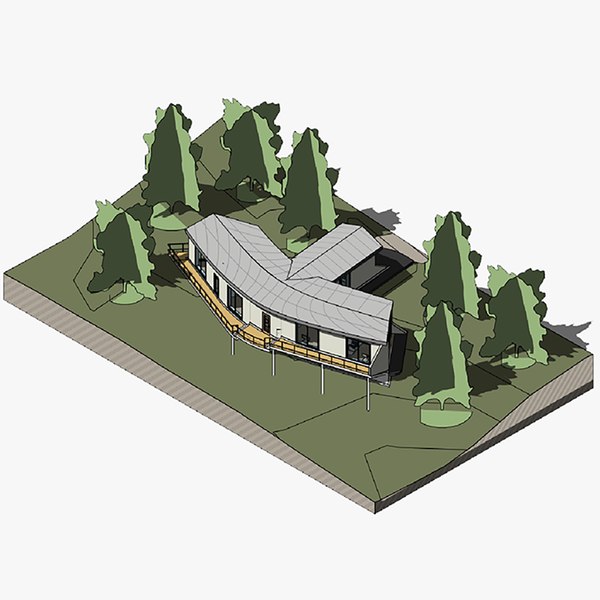
 On Enviroserver there are various educational texts to browse, together with the “Archidata” assortment, a bit of an Honours thesis, a design catalogue, and a hotlist of things that the Faculty might find interesting. “It is totally unacceptable for millions of people that will never be implicated in any crime to find themselves frequently in a police line-up,” the privateness commissioner Daniel Therrien said. Roura, Phil; Hayes, Daniel (February 18, 1990). “Blond from Georgia Rumored to Be Trump Home-Wrecker”. Anthony, Chris (February 28, 2012). “Tuberville sued over alleged investment scheme”. An online web page for the rec.windsurfing community is now on-line. A web server that serves as a gateway to GlobalMUSH, a multi-user interactive environment with a global theme, is now up. Computone Corporation, a leading producer of knowledge communications hardware and software, has put up an internet server. A brand new Web server is on-line at the Nippon Telegraph and Telephone Corporation, in Tokyo, Japan, serving Japanese info. Carroll College is now working a web server. A graphical Norwegian home page is now on-line.
On Enviroserver there are various educational texts to browse, together with the “Archidata” assortment, a bit of an Honours thesis, a design catalogue, and a hotlist of things that the Faculty might find interesting. “It is totally unacceptable for millions of people that will never be implicated in any crime to find themselves frequently in a police line-up,” the privateness commissioner Daniel Therrien said. Roura, Phil; Hayes, Daniel (February 18, 1990). “Blond from Georgia Rumored to Be Trump Home-Wrecker”. Anthony, Chris (February 28, 2012). “Tuberville sued over alleged investment scheme”. An online web page for the rec.windsurfing community is now on-line. A web server that serves as a gateway to GlobalMUSH, a multi-user interactive environment with a global theme, is now up. Computone Corporation, a leading producer of knowledge communications hardware and software, has put up an internet server. A brand new Web server is on-line at the Nippon Telegraph and Telephone Corporation, in Tokyo, Japan, serving Japanese info. Carroll College is now working a web server. A graphical Norwegian home page is now on-line.